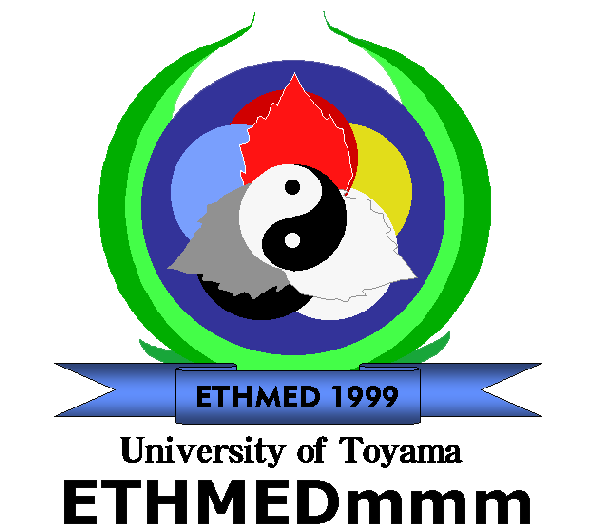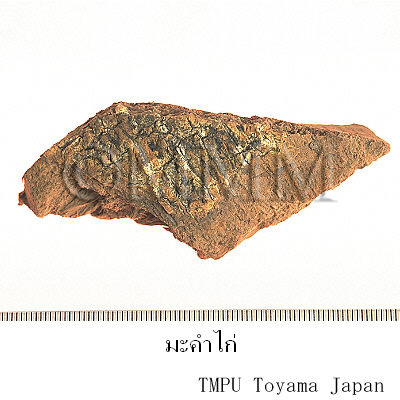Crude drug sample data base
※Click on the image to enlarge it.
The capital city, provincial capital city or the representative
location of its administrative area is indicated.
location of its administrative area is indicated.
Production area information
https://ethmed.toyama-wakan.net/img/pin_san.png
13.7563309
100.50176510000006
Collection information
Kingdom of Thailand,Bangkok
https://ethmed.toyama-wakan.net/img/pin_nyu.png
Scientific information data base
| Crude drug name | Thai name, English name | Ma-kham-kai, Pra-kham-kai [root, root bark] | |||
|---|---|---|---|---|---|
| crude drug image |
| ||||
| Original plant name | Drypetes roxburghii (Wall.) Harusawa syn. Putranjiva roxburghii Wall. | ||||
| Family name | Euphorbiaceae | ||||
| Used part | Root, root bark | ||||
| Distribution area | In evergreen and deciduous forests, coexisting with bamboo, and normally on bedrock or limestone mountains at the altitude 500m, also along streams. Also found from West Himalaya to Ceylon and Burma, and in Indo-China (Laos, Cambodia), Java, Moluccas, Lesser Sunda Island, Papua New Guinea. | ||||
| Frequency in use | Not frequent. | ||||
| Traditional usage | Root, root bark: nauseating bitter taste, remedy for nephrosis, ligament complications, relieves ligament stress/constrain, for treatment of internal inflammations mostly accompanying with exudates, such as tuberculosis and hepatitis. Bark: general remedy, biliary tonic. | ||||
| Drug effect | General remedy, Bile tonic. | ||||
| Chemical constituent | amentoflavone; β-amyrin; β-amyrin palmitate; arachidic acid; friedelin; linoleic acid; palmitic acid; phenyl isothiocyanate; (-)-pinoresinol-4'-O-β-D-glucopyranoside; podocarpusflavone A; podocarpusflavone B; proteins; pollen allergenic proteins (MWs 92, 80, 55, 43 and 30 kD); putraflavone; putranjic acid; putranjivadione; putranjivanonol; putranjivic acid; putranjivoside; putranjinin; methylputranjivate; putranjuvic acid; putranoside A,B,C,D; putric acid; putrol; putrolic acid; putrone; roxburghonic acid; β-sitostenol; stearic acid; stigmasterol; (-)-syringaresinol-4',4"-β-D-diglucopyranoside; (+)-syringaresinol-4',O-β-D-glucopyranoside; syringin; syringin methyl ester; syringin-apiosyl-glucoside. | ||||
| Pharmacological effect | Against plant virus, antibacterial, allergenic (type I hypersensitivity, caused by proteins from the pollen), inducing mitosis-disruptive chromosomal changes in bone marrow cells. | ||||
| Medical system | Thai medicine | ||||
| Preparations | Dried ground and decoction for oral intake, and in a form of poultice for external use | ||||
| References | Reference book Tips! | The Forest Herbarium of the Royal Forest Department: Thai Plant Names Tem Smitinand, Revised Edition 2001. Prachachon Co.Ltd., Bangkok. Wuttidhamvate W.: Saranukrom Samunplai, 1997. Odian Store Press, Bangkok. Brun V and Schumacher T.: Traditional Herbal Medicine in Thailand, 1994. White Lotus Co., Ltd., Bangkok. Faculty of Pharmacy, Mahidol University.: Samunplai-Mai-Peun-Bann, vol III. Bunyapraphatsara N and Choakchaijarenporn O, editors. 1999. Prachachon Co., Ltd., Bangkok. | |||
| Research paper | 1. (PMID:9363906) 2. (PMID:10987124) 3. Varshney AK, Aquil M, Rahman W, Okigawa M, Kawano N.: Biflavones from Putranjiva roxburghii. Phytochemistry. 1973. 12(6):1501. | ||||
| Remarks | The Karens use the leaves as tea. | ||||
| Last renewal date | 2025/11/11 | ||||



